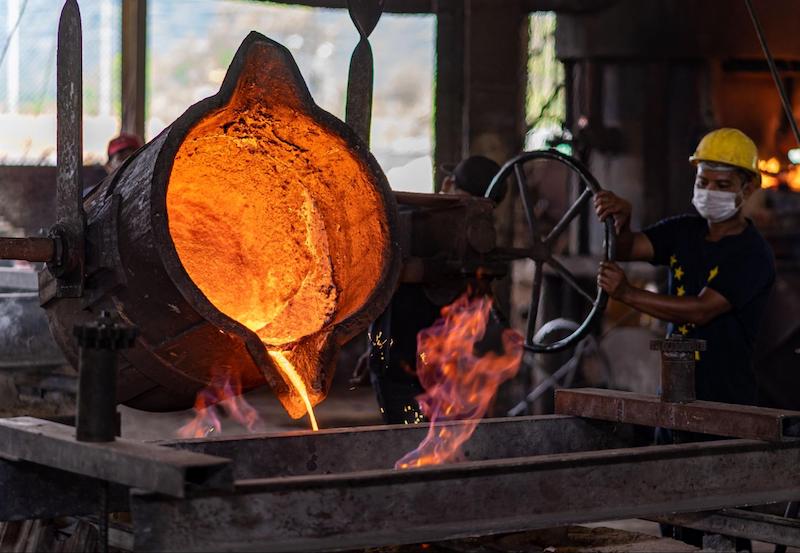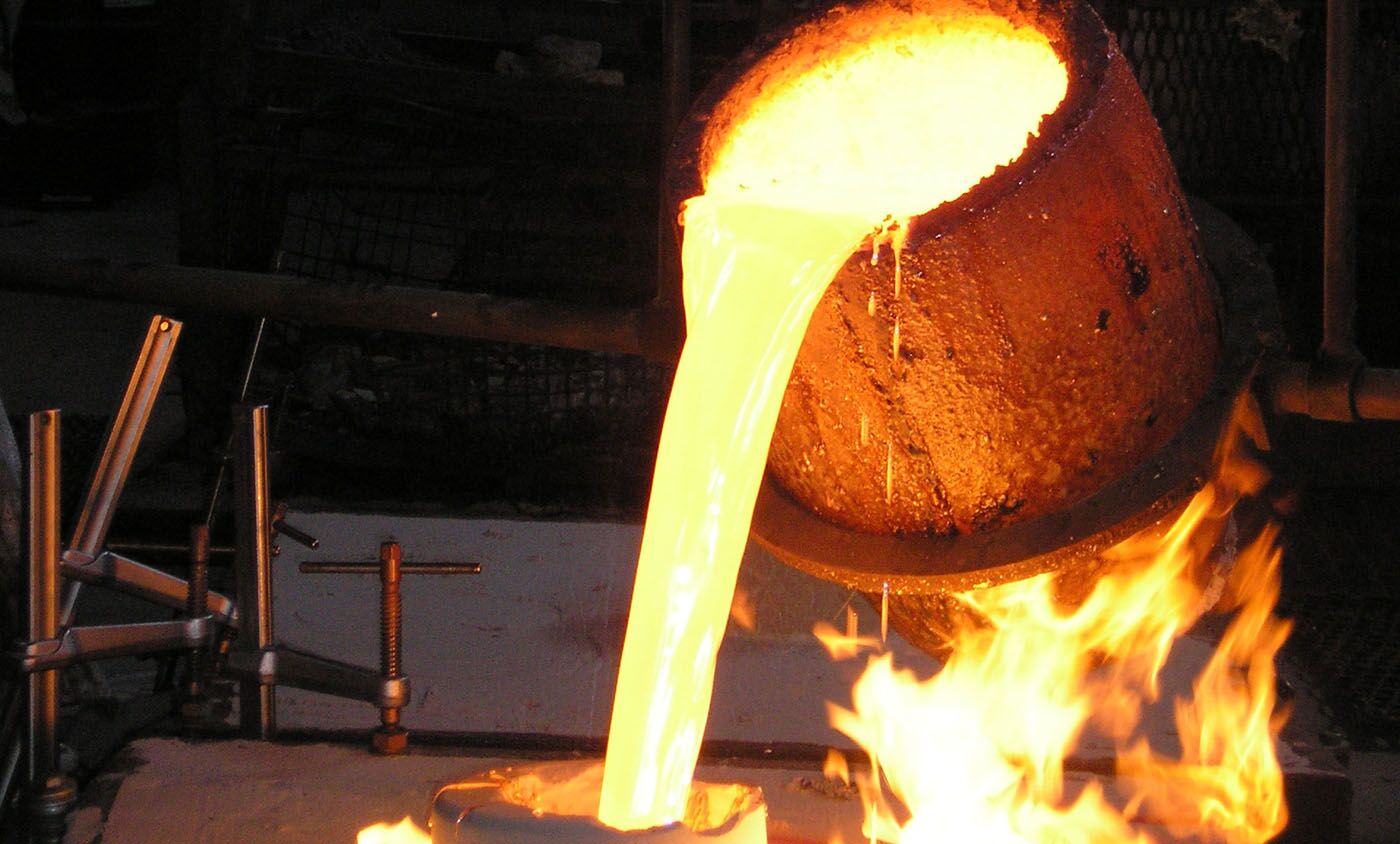The technology behind the success of every Casting Foundry
Wiki Article
Comprehensive Overview to the Uses and Manufacturing Techniques in Aluminum Foundry Operations
The considerable guide to aluminum foundry procedures offers vital insights right into the varied applications of aluminum throughout numerous markets. It systematically checks out important manufacturing techniques, melting procedures, and molding approaches that add to precision and top quality. Furthermore, the guide highlights the significance of completing processes that boost both mechanical residential properties and appearance. Understanding these elements is essential for anyone associated with aluminum production, raising questions regarding best techniques and advancements in the area.Introduction of Aluminum Spreading Applications

Furthermore, the construction sector benefits from aluminum spreadings in building aspects and structural elements, offering durability and resistance to deterioration. Customer goods, such as cooking equipment and appliances, additionally make use of aluminum castings for their warm conductivity and visual allure. The electronic devices industry relies on aluminum for real estates and heat sinks, making sure efficient thermal management. Overall, light weight aluminum casting's flexibility enables it to satisfy varied industry needs successfully, solidifying its significance in contemporary production methods.
Trick Manufacturing Techniques in Light Weight Aluminum Foundry
In the domain name of aluminum shop procedures, numerous manufacturing methods play a pivotal function fit the final products that offer diverse industries. aluminum casting company. Key strategies consist of sand spreading, die casting, and financial investment spreading, each offering unique benefits based upon the application demandsSand spreading makes use of a mix of sand and binder to produce mold and mildews, permitting for intricate geometries at reduced costs. Die spreading, on the various other hand, utilizes high-pressure shot of molten light weight aluminum into steel mold and mildews, ensuring accuracy and a smooth surface coating, suitable for high-volume manufacturing. Financial investment casting offers extraordinary dimensional accuracy and surface top quality, making it suitable for elaborate layouts.
In addition, methods such as permanent mold spreading and gravity die casting better improve the flexibility of light weight aluminum shop procedures (Aluminum Casting). Each technique is picked based upon elements like production quantity, part intricacy, and material buildings, guaranteeing beneficial results across various applications
Thawing Processes and Temperature Level Control
Efficient melting processes and precise temperature level control are essential for achieving suitable aluminum shop operations. The melting of aluminum commonly includes numerous approaches, including crucible melting, induction melting, and rotating melting, each with its own advantages and applications. Crucible melting is generally made use of for little sets, while induction melting offers effective home heating and uniform temperature distribution.
Molding Techniques for Precision Castings
Grasping molding techniques is essential for creating accuracy castings in light weight aluminum foundry operations. Different approaches, such as sand, financial investment, and pass away spreading, play a crucial function in attaining preferred resistances and surface finishes. Sand casting, as an example, makes use of a mixture of sand and binder to produce molds, enabling for elaborate styles and huge parts. Investment casting, on the various other hand, utilizes wax patterns that are coated in ceramic product, leading to highly detailed and exact forms. Die casting utilizes high-pressure injection of liquified aluminum right into metal molds, ensuring regular dimensions and fast production rates.Each strategy has its benefits and is chosen based upon factors such as intricacy, quantity, and mechanical buildings required. Effective mold style, including venting and gating systems, additionally boosts the high quality and accuracy of the ended up item. Comprehending these molding methods enables foundries to fulfill specific sector needs and boost total operational efficiency.
Finishing Procedures to Improve Light Weight Aluminum Elements
Ending up procedures play a critical role in boosting the efficiency and aesthetics of light weight aluminum parts. These processes, which comply with spreading, objective to boost surface high quality, rust resistance, and mechanical homes. Typical techniques consist of machining, which refines measurements and surface coating, and polishing, which enhances visual appeal by producing a smooth, reflective surface.Plating is one more considerable procedure, supplying a sturdy oxide layer that shields versus wear and corrosion while enabling shade personalization. Furthermore, powder finish offers a large range of colors and surfaces, making sure both protection and aesthetic improvement.
In many cases, components may undergo shot blowing up to boost and remove impurities adhesion for subsequent coatings (aluminum foundry). In general, these finishing processes are important for taking full advantage of the capability and lifespan of light weight see page aluminum elements, making them appropriate for diverse applications throughout various sectors
Regularly Asked Questions
What Safety Actions Are Required in Light Weight Aluminum Foundry Procedures?
In light weight aluminum factory operations, necessary safety and security procedures include personal protective devices, proper air flow, fire avoidance protocols, normal tools upkeep, training for employees on dangers, and maintaining clear emergency situation treatments to ensure a secure functioning environment.Exactly How Do Ecological Rules Impact Aluminum Foundries?
Environmental policies substantially affect light weight aluminum factories by applying standards for discharges, find here waste monitoring, and source usage. Conformity usually requires financial investments in cleaner innovations and processes, inevitably affecting functional expenses and production performance within the market.What Job Opportunities Exist in Aluminum Factory Procedures?
Numerous occupation possibilities in light weight aluminum shop procedures include duties such as factory specialist, mold designer, quality assurance assessor, procedure engineer, and production supervisor, each contributing to effective production and cutting-edge procedures within the sector.How Is Quality Assurance Achieved in Light Weight Aluminum Spreading?
Quality assurance in aluminum spreading is accomplished via extensive inspections, standardized testing treatments, and the usage of sophisticated innovations. Normal monitoring of temperature, make-up, and dimensional precision guarantees products meet defined requirements and consumer needs.What Are the Common Defects in Aluminum Castings and Their Causes?
Typical problems in aluminum spreadings consist of shrinkage, porosity, and surface area roughness. Reasons typically come from incorrect mold layout, poor putting techniques, and contamination, influencing the overall honesty and performance of the end product.The considerable guide to light weight aluminum shop procedures presents important insights right into the diverse applications of light weight aluminum throughout various sectors. Aluminum spreading plays an important role in numerous industries due to its flexibility and positive residential properties. Die spreading, on the various other hand, employs high-pressure shot of molten light weight aluminum into steel mold and mildews, making certain precision and a smooth surface area coating, ideal for high-volume manufacturing. Additionally, methods such as irreversible mold spreading and gravity die casting further boost the adaptability of light weight aluminum shop operations. Understanding molding techniques is vital for producing accuracy spreadings in link aluminum foundry procedures.
Report this wiki page